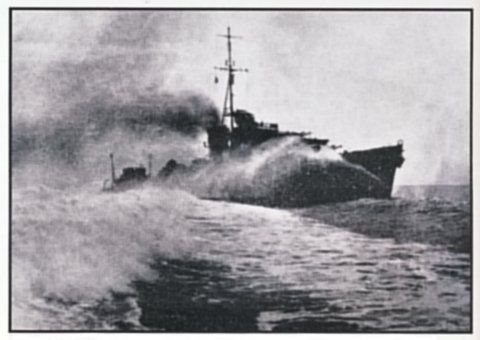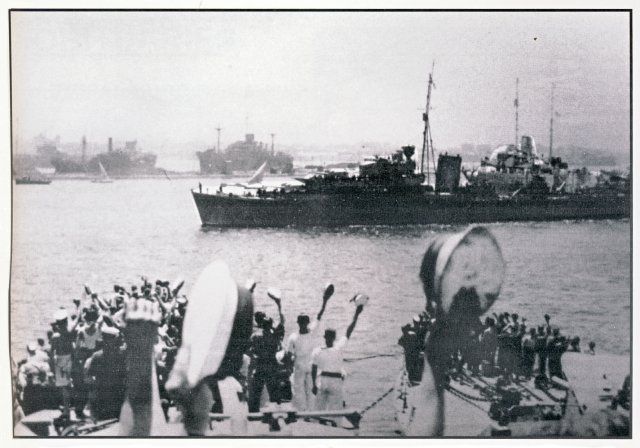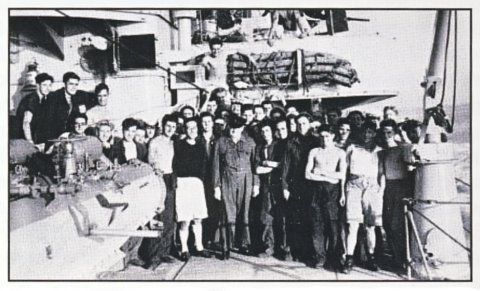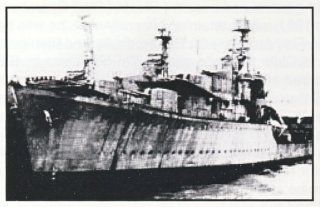

 The South African
The South African
If you have not yet read the autobiography of George Bizos, Odyssey to Freedom, then there is a treat waiting for you. The book describes how the Bizos' odyssey was well underway very early in his life, on a leaking boat adrift in the Mediterranean. Foreshadowing his proud life to come in South Africa, George Bizos and his father were rescued, having been fortunate enough to come across the destroyer, HMS Kimberley.

Almost forty years after the South African War (1899-1902) Siege of Kimberley, one of eight K-class destroyers was being built in the United Kingdom. Commemorating the Siege, and requiring a name beginning with the letter 'K', the HMS Kimberley was launched on 1 June 1939, three months before Hitler invaded Poland and set off the Second World War.
Destroyers are small warships which were originally referred to as 'torpedo boat destroyers'. By the Second World War, destroyers were expected to engage torpedo boats and submarines, and to assist the larger cruisers in escort duties. The HMS Kimberley had a crew of 138 men and saw service first in the Atlantic Ocean and in the seas around Britain where, on 21 February 1940, she intercepted and captured the German freighter, Wahehe, taking it to Kirkwall as a prize. In May 1940, the HMS Kimberley was transferred to the Mediterranean where damage received in previous engagements was repaired. Returned to action in fine condition, the Kimberley was soon embroiled in a heavy fight for control of the Mediterranean region, where Stuka dive-bombers were poised to rain hell on the British fleet.

The HMS Kimberley was initially sent to the Red Sea where she engaged an Italian destroyer, the Francesco Nullo, on 20 October 1940. Under Lt Cdr J S M Richardson, the Kimberley seriously damaged the Italian destroyer, but took damage herself, incurred from an Italian shore battery. The Kimberley was successfully towed to Port Sudan by the HMS Leander, and the Francesco Nullo was sunk by the Royal Air Force before it was able to receive help. The Kimberley was only partially repaired and therefore continued with escort duties having reduced speed capability. After being properly repaired in Bombay, she rejoined the Mediterranean fleet in May 1941.

In the Balkans, Mussolini had failed to capture Greece and the Italian fleet in the Mediterranean was too small to engage with the British fleet. Germany came to Italy's rescue resolved to gain control in the Mediterranean. Also being without a fleet which could compete with the British, German aircraft were moved into the arena to compensate, and the Stuka dive-bombers in particular were proving to be highly effective at harassing the British at sea. Germany invaded Greece on 7 April 1941 and did so with such speed and power that the British and Commonwealth force helping to defend Greece was defeated and evacuated before May. Still unaccustomed to opposing the German Blitzkrieg tactics, the Allies had been pushed out of Greece so swiftly that numerous warships, which included the HMS Kimberley and eighteen other destroyers, had to make desperate attempts to evacuate troops and civilians across the Mediterranean to the large British naval base in Alexandria, Egypt.
Having missed their chances to flee, George Bizos and his father (a small town mayor) were forced to take seven New Zealand sol diers they were sheltering and attempt to reach Crete in a smaller-than-adequate fishing boat made available by the locals on the shoreline near Koroni on the most westerly peninsula of the Peloponnese. The frequent Stuka attacks and the use of German paratroopers in Crete meant that the island also rapidly fell to the Germans, probably during the three days when George Bizos was at sea with his father. The thirteen-year-old boy was bucketing water out of the leaking boat near the coast of Crete when the HMS Kimberley, en route to evacuate troops from Crete, spotted the fishing boat and stopped to rescue them. Like many refugees from Greece and Crete, George Bizos and his father were dropped off in Alexandria where food supplies soon became restricted. With adequate food supplies in South Africa, George Bizos was one of many people dropped off at Durban Harbour with an entirely new life ahead.
While George Bizos continued with his odyssey in South Africa, the HMS Kimberley returned to the Mediterranean. Continuing to survive Stuka attacks the HMS Kimberley saw some success while performing her escort duties in the area between Rhodes, Tobruk, and the island of Kos. Near Tobruk, at around 02.00 on 12 January 1942, the German submarine U-77 sighted two destroyers, one of which was the Kimberley. The submarine attack was successful and the HMS Kimberley was left helpless after a torpedo tore off her stern, killing three members of the crew. U-77 fired a torpedo to finish off the Kimberley, but missed. The submarine fled and the HMS Kimberley was towed to Alexandria by fellow destroyer, HMS Heythrop. The Kimberley was partially repaired at Alexandria and, after being fully repaired in Bombay, she was only returned to service in January 1944.

On 8 May 1945, off the coast of Rhodes, the HMS Kimberley invited aboard the local German commandant and his senior officers from a British torpedo boat they had captured the previous night. The Kimberley hosted the surrender of the German garrison at Rhodes and escaped the war as one of only two K-class destroyers to survive. the other being the HMS Kelvin. Both the Kimberley and the Kelvin were eventually scrapped in June 1949.

Return to Journal Index OR Society's Home page
South African Military History Society / scribe@samilitaryhistory.org